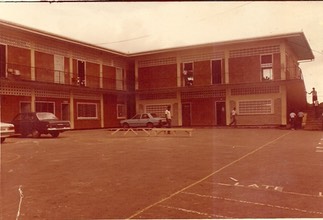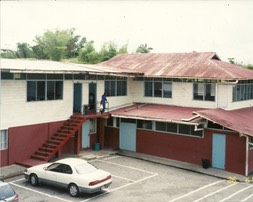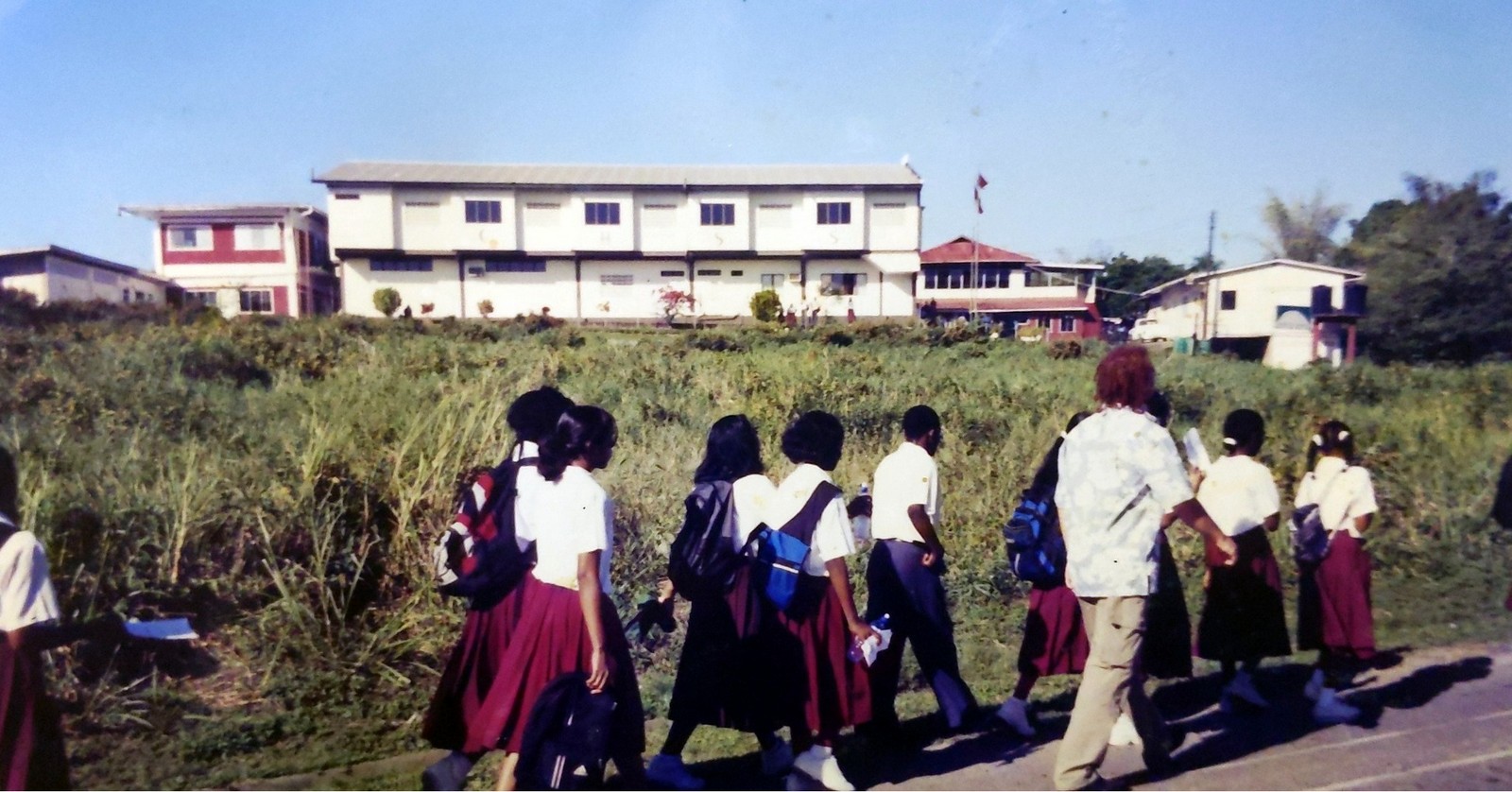Cowen Hamilton Secondary School began at Fifth Company, on the Moruga Road, in South Trinidad, on 16th January 1962, as a co-educational institution. It started as a private secondary school by the Baptist Church Council (B.C.C.), now known as the Baptist Union Executive Council (B.U.E.C.). This was the first attempt to establish secondary education, after seventy-five years of primary school education in the country.This venture is the result of years of prayer, thought, and planning on the part of leaders of the Union. Due to the location, primary school pupils along the Moruga Road, particularly the Baptist schools, had no means of improving their education beyond this level, and without secondary education the field of future employment was considerably limited. This led to frustration on the part of both children and parents, whose economic situation prevented them from taking advantage of facilities offered in urban areas.

A small committee was duly elected by the B.U.E.C. to study and report upon the feasibility of starting a school on Moruga Road. The outcome was that a location was found for the school. The Rev. W. Cranston Bell, a Missionary, agreed to permit the ground floor of his home at Kern Bungalow to be used for this purpose. It was a great sacrifice, nonetheless Mrs. Bell and he graciously offered the facility, for which the council was very grateful. The space was constructed to form two rooms which could each accommodate around thirty students. In the meantime Rev. Sydney Eric Escote Payne, (B.A., Dip. In Ed., Bristol) another B.M.S. missionary, agreed to head the staff.
 An entrance examination was held in October 1961 amongst approximately one hundred and ten boys and girls from primary schools in the area from North Trace to Marac. These pupils were between the ages of 13 and 15 years. As a result of this examination 37 students were accepted for enrolment and the doors of the school were thrown open on 16th January, 1962. The staff consisted of Rev. S. E. E. Payne and Mr. W. F. Webb, a retired government school headmaster, with Mr. Andrews as cleaner and janitor.
An entrance examination was held in October 1961 amongst approximately one hundred and ten boys and girls from primary schools in the area from North Trace to Marac. These pupils were between the ages of 13 and 15 years. As a result of this examination 37 students were accepted for enrolment and the doors of the school were thrown open on 16th January, 1962. The staff consisted of Rev. S. E. E. Payne and Mr. W. F. Webb, a retired government school headmaster, with Mr. Andrews as cleaner and janitor.
A second entrance examination in July of that year produced an additional 29 entrants, and school reopened in September with 76 students and a teaching staff of three. The students were required to pay a termly fee of $16.00. From the sums collected, furniture and equipment were paid for, and a salary was provided for Mr. Martin. The principal received no remuneration, as he was provided for the B.M.S. as a missionary. Mr. Webb had accepted appointment on a voluntary basis for one term, with the promise that he would renew his offer if it were found necessary afterwards. Soon he was paid a small travelling allowance which, as the school progressed, grew to be a salary based on his qualification as a non-graduate master. By this time a board, named Cowen Hamilton Secondary School Board, under the chairmanship of Mr. A. H. Busby, retired chief magistrate, and a member of St. John's Baptist Church, Port of Spain, had been formed, and this board has directed the destinies of this institution to the present day.
The naming of the school was a very interesting exercise. Amongst the benefactors was Rev. Bell who, in addition to giving up the use of the ground floor of his house for use as classrooms, worked incessantly for its success and advantage. He was intensely interested in history, and was able to glean certain facts from the archives of the B.M.S. He learnt that prior to the advent of B.M.S. in Trinidad; one Will Hamilton was in correspondence with them. Hamilton was a natural as well as a spiritual leader amongst the Baptists who had settled in Trinidad after they had served in the British forces in America during its struggle for independence. As a result of this contact by Mr. Hamilton a B.M.S. representative was sent to Trinidad in the person of Mr. George Cowen. He came as the result of an educational survey. He returned to England, was ordained a minister, and sent back as the first missionary to Trinidad. The name of the school is the amalgamation of the two names: Cowen, an English missionary, and Hamilton a Baptist enthusiast. This name caught the imagination of the B.U.E.C. and was assigned to the school.

The period between 1962 was very interesting. Under the capable leadership of Mr. Payne as principal, a post he filled until 1965, the school grew in an enrollment of over 300. During this period there were also many physical changes: accommodation on the ground floor was twice extended to provide classroom space for 160 students, the Bells vacated the building to occupy the new mission house at lower Fifth Company, and two more classrooms and a staff room were accommodated upstairs.
The next phase of building extension came when a used bungalow was donated by British Petroleum, Trinidad, and erected on the compound. This extension brought the total number accommodated to 400. All the building expansion was accompanied by a growth in scholarship. By 1965 the first class of O-level students had secured passes, though none of them passed in more than four subjects. Some of them proceeded to take five or more subjects in later attempts. In the meantime Rev. Payne, because of domestic necessity returned to the United Kingdom in 1965. He was succeeded by Rev. W. Cranston Bell. He resigned in 1968, and Mr. Malcolm W. London, B.A., L.O.P., was appointed by the Ministry of Education to fill the vacancy. After two years Mr. London left for another appointment. Rev. Allan J. Parkes accepted an acting appointment after his start as deputy principal. By September 1971 Rev. Parkes relinquished his post on no-pay leave for one year to take up the pastorate of St. John's Baptist Church. Mr. G. A. Hamilton was then called upon to take up the acting appointment, pending the selection of a successor.
During those eleven years and more, individuals with masters, bachelors and those who had not yet attained such academic status have come and gone. Some of these had been from overseas under special arrangements with the ministry. The greatest achievement of this school has been the spiritual and academic response of the students to the leadership of the staff. Next in line we place the achievement of the board.
We placed our hand in the hand of God and stepped out into darkness in 1962, and we found that it has been better than a light and safer than a known way.
